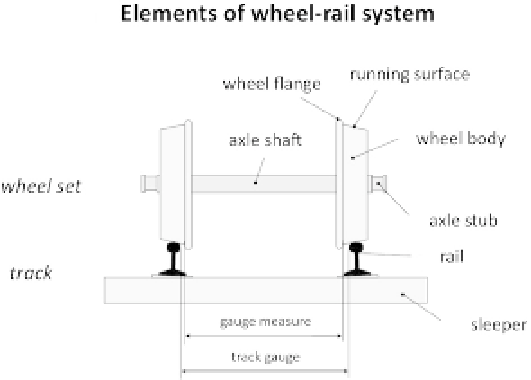Information Technology Reference
In-Depth Information
- As 90 till 95% of all hot boxes are observed on freight trains, only freight
trac is considered for this analysis. The average speed limit for most
European freight trains is 100 km/h.
- We assume, that an on-site staff (e.g. station inspector) watches the trains
and thus is able to discover possible hot boxes. Therefore it might be pos-
sible to prevent a hazard or even an accident through human mitigation.
- Experts estimate that every fifth to tenth hot box eventually leads to a
derailment.
2.3
Hazard identification
If the hot box detection fails unnoticed and a hot box accurse, the resulting
event could be called “track guidance not ensured”. One possible consequence
could be a derailment caused by a broken axle stub (Fig. 2.). Thus, the
considered hazard is the “failure of the hot box detection”. Note that the
hazard scenario assumes that a hot box already exists.
Fig. 2. Elements of wheel-rail system (based on [12])
Another possible consequence of a hot box could be a fire in the vehi-
cle. For now, this accident type is excluded within this analysis to reduce
complexity.
2.4
Consequence analysis
To assess the potential mitigation of an accident and the possible conse-
quences of an accident, the BP-Risk parameters are used for the risk analysis.
To assess parameter G, which assesses possible mitigation factors, two
sub parameters are used: parameter B and M.

